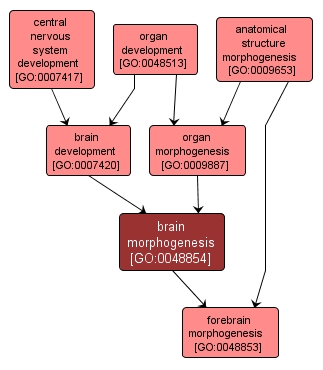| Desc: |
The process by which the anatomical structures of the brain are generated and organized. Morphogenesis pertains to the creation of form. The brain is one of the two components of the central nervous system and is the center of thought and emotion. It is responsible for the coordination and control of bodily activities and the interpretation of information from the senses (sight, hearing, smell, etc.). |














